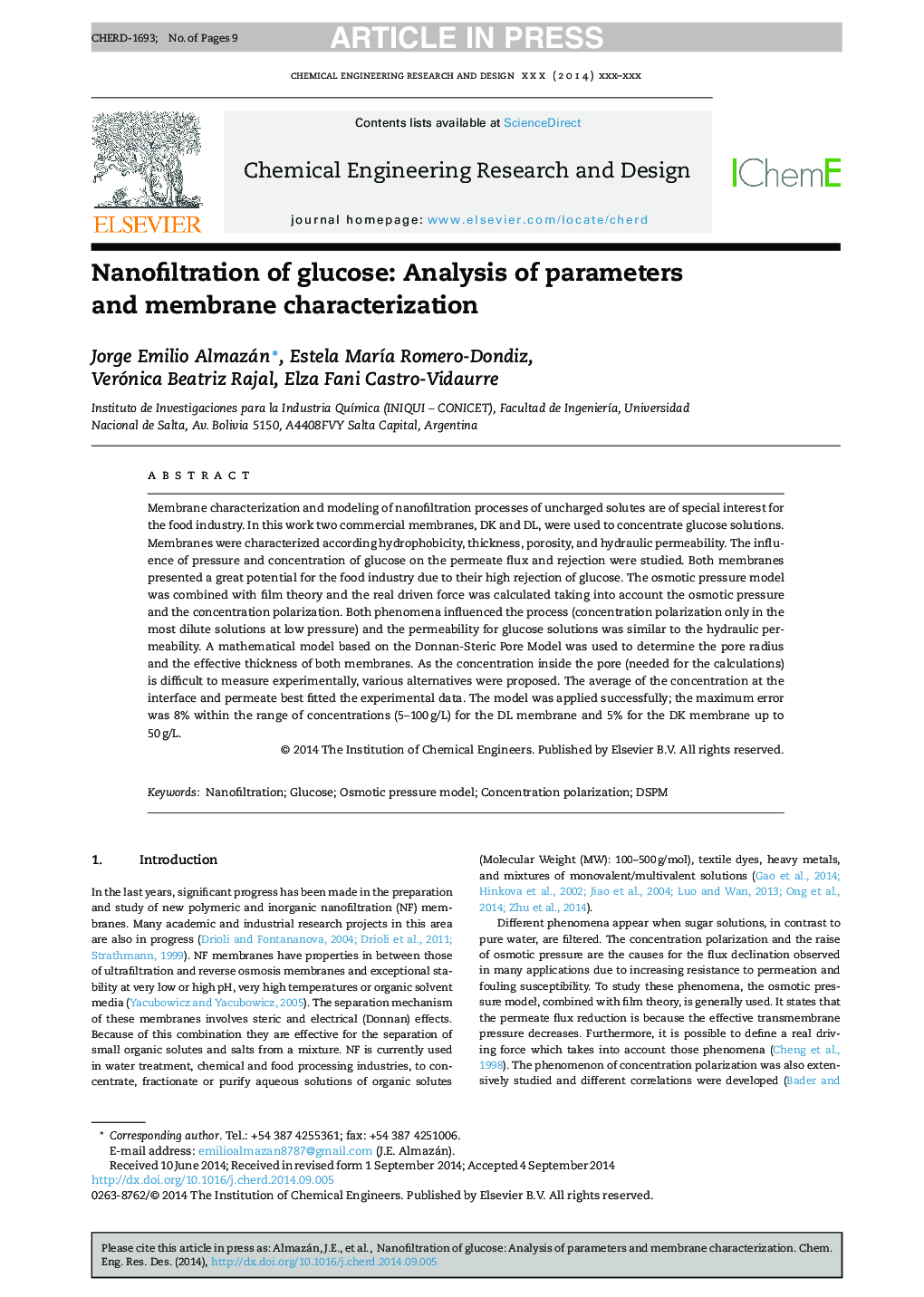| Article ID | Journal | Published Year | Pages | File Type |
|---|---|---|---|---|
| 620498 | Chemical Engineering Research and Design | 2015 | 9 Pages |
Abstract
Membrane characterization and modeling of nanofiltration processes of uncharged solutes are of special interest for the food industry. In this work two commercial membranes, DK and DL, were used to concentrate glucose solutions. Membranes were characterized according hydrophobicity, thickness, porosity, and hydraulic permeability. The influence of pressure and concentration of glucose on the permeate flux and rejection were studied. Both membranes presented a great potential for the food industry due to their high rejection of glucose. The osmotic pressure model was combined with film theory and the real driven force was calculated taking into account the osmotic pressure and the concentration polarization. Both phenomena influenced the process (concentration polarization only in the most dilute solutions at low pressure) and the permeability for glucose solutions was similar to the hydraulic permeability. A mathematical model based on the Donnan-Steric Pore Model was used to determine the pore radius and the effective thickness of both membranes. As the concentration inside the pore (needed for the calculations) is difficult to measure experimentally, various alternatives were proposed. The average of the concentration at the interface and permeate best fitted the experimental data. The model was applied successfully; the maximum error was 8% within the range of concentrations (5-100Â g/L) for the DL membrane and 5% for the DK membrane up to 50Â g/L.
Related Topics
Physical Sciences and Engineering
Chemical Engineering
Filtration and Separation
Authors
Jorge Emilio Almazán, Estela MarÃa Romero-Dondiz, Verónica Beatriz Rajal, Elza Fani Castro-Vidaurre,
